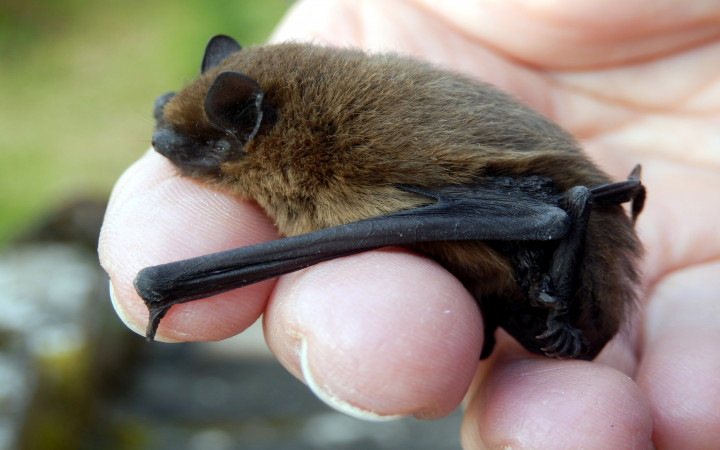Today’s Wonder of the Day was inspired by Kate. Kate Wonders, “Why do bats have White Nose and we don't?” Thanks for WONDERing with us, Kate!
When Halloween rolls around, what images come to mind? Witches on broomsticks? Carved pumpkins brightly lit from within? Ghosts floating along in the breeze?
All of these things and more are signs of the spooky season. But there's one more animal that makes its appearance on decorations when autumn arrives: the bat.
Bats tend to get a bad rap when it comes to an unearned bad reputation. Is it the association with the spooky Halloween holiday? Perhaps. Or maybe people are afraid of flying animals with sharp teeth that happen to sleep upside-down in caves.
Whatever the reason, many people seem to have an irrational fear of bats. People who love to explore caves, though, usually develop an appreciation for these animals. When you see them in their natural environment, you realize that there's really nothing to fear.
In recent years, however, bats have had plenty to fear from the environment around them. Many bats have fallen prey to a disease known as white-nose syndrome (WNS).
WNS is caused by a fungus known scientifically as Pseudogymnoascus destructans. Experts think this exotic fungus was introduced into America from Europe.
The fungal disease was first noticed in New York in 2006. Within a decade, it had spread to more than half of the United States and at least five Canadian provinces.
The fungus infects bats during hibernation. The name "white-nose syndrome" comes from the white fungal growth that accumulates on the faces and wings of infected bats.
The disease causes bats to use more energy and even wake up early from hibernation. They then use up their stored fat and starve to death before spring can arrive.
To date, WNS has killed millions of bats and caused huge population declines. Some species may even be on the verge of extinction in certain areas.
WNS doesn't affect humans, as far as scientists know. Humans can spread the fungus that causes WNS, however. That's why many caves across the U.S. have been closed for periods of time in order to combat the spread of WNS among particular species of bats affected by the disease.




